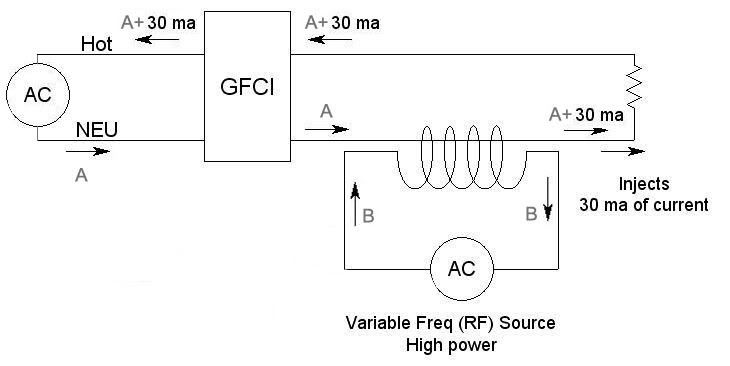080723-1148 EST
A GFCI will not prevent a shock, nor will it trip because I put one finger on the hot output lead and a finger on the other hand on the earth. For someone else it might trip, or for me under non-normal conditions.
My usual resistance from a finger on one hand to a finger on the other hand is 300,000 to 500,000 ohms. At 120 V this is 0.4 to 0.24 MA. This is way below the trip level of the GFCI.
At 120 V to trip at 5 MA the resistance thru me must be below 24,000 ohms.
However, if I am holding a metal housing electric drill with a working EGC system, then an internal short less than about 24,000 ohms from the hot line to the drill motor housing should trip within 7 seconds. If this was a dead short then the housing voltage will rise to about 60 V RMS (85 V peak) until the GFCI trips. For the dead short the GFCI may take up to 16 MS to trip, but most likely within 8 MS. I will get a shock. I have not run a trip time measurement.
.


